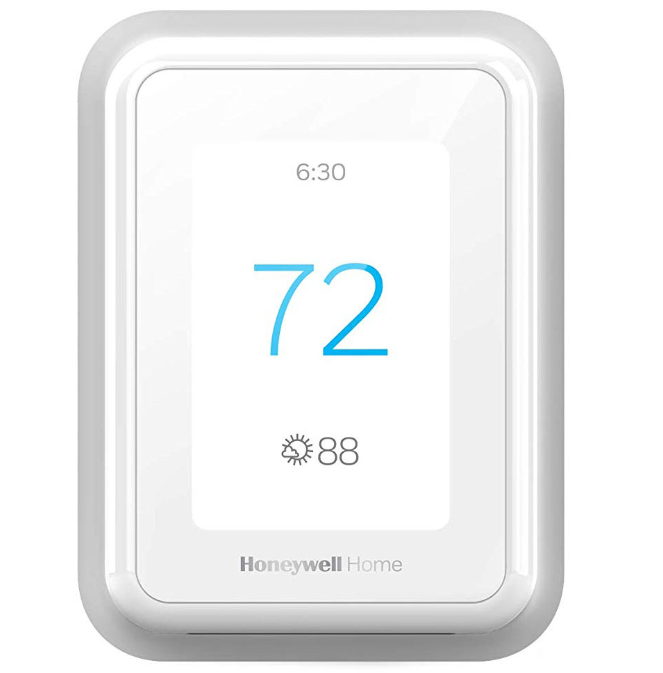Smart Thermostats: Benefits and Advantages for Homeowners | JADE Learning

By: Reggie Hucks | Nov 04, 2020
Thermostats have changed a whole lot in the last 20 years. Gone are the mercury bulbs and long levers. Even first-generation programmable thermostats are second class to the newest variety. Thermostats such as Google Nest, Honeywell T9, and Ecobee lead the way with the latest features for home comfort and energy savings.
Smart thermostats make it easy to get comfortable. These devices can be controlled remotely with a phone, tablet, or computer, and even utilize their own intelligence to keep a home’s temperature right where the owner wants it. How about a thermostat that you can talk to? It’s available with some of the smart thermostats. Because these thermostats are WIFI enabled, programming them to work with the different “talking” services can be easy. You can tell the thermostat you are leaving, which would reduce the system run time while you were away. You could tell the thermostat you were going on a vacation. This command indicates the home is unoccupied and will not need the same comfort conditions, thereby saving energy. Or, you could just say “Alexa, set the temperature to 77 degrees.”
A smart thermostat can do more than just alleviate you of the task of turning a dial. These devices can detect and alert you of problems with your HVAC system, remind you when it’s time for regular maintenance, and more. Read about just a few of the benefits of smart thermostats below.
What Smart Thermostats Do for Homeowners
Control From Anywhere
Smart thermostats get their “brain power” because they wirelessly connect to WIFI. This opens many features that standard programmable thermostats can’t do. For instance, through a cell phone app, you can control the temperature in your home from anywhere. You can get reports about home energy usage. Because of the WIFI integration, the smart stat even knows when the weather is changing.
Through an app on a cell phone, geofencing tells your thermostat when you are leaving or coming home. The thermostat will set your residence to the desired comfort conditions before you return. For example, let’s say you are three miles away and returning home. The cell phone signals the thermostat to bring the house up to 75 degrees. The energy savings with this feature is the setback temperature that is maintained when the home is unoccupied.
The remote capabilities of smart thermostats are also helpful to HVAC technicians as they can monitor the conditions of a building from afar and make any necessary changes with the click of a button.
Learn Your Preferences
Many smart thermostats have the ability to learn the preferences of the homeowner or building occupants and customize settings accordingly. If you typically return home around 5:30 PM on weekdays and immediately turn the air cooler, your thermostat will pick up on that and program itself to turn the air cooler by itself before that time. Basically, these smart stats are self-programming versus setting a program manually.
If you like total home comfort, this feature is a winner. Thermostats, such as the Honeywell T9, have digital, battery powered sensors that can be placed up to 200 feet away from the main unit. The sensors send temperature and occupancy information from remote locations to the main thermostat. When the main thermostat is programmed, separate rooms can get comfort priority over others. Additionally, the information from the sensors can be used to create an average temperature that the system will accommodate. A sensor can detect motion, which signals the main thermostat that an area is occupied. As a result, the system will provide conditioned air to the space at a preset temperature.
Diagnose and Alert
A smart thermostat can detect when there may be a problem with a duct or HVAC system and notify you of the problem. This is a big benefit to homeowners as it allows them to diagnose small problems before they turn into bigger and more expensive (or dangerous) ones. These diagnostic features are also beneficial to technicians as they can be immediately notified of any issues involving clients in the area.
Maintenance Reminder
A smart thermostat can remind you of routine maintenance responsibilities, such as when it’s time to change an air filter or have a yearly inspection performed. Just as with the diagnostic features, these maintenance reminders are equally helpful to home and building owners and technicians alike.
Save Money
Smart thermostats save money by only heating and cooling a home or building as much as needed and no more. And by detecting problems as they arise and using maintenance reminders to keep the unit in top shape, a smart thermostat can extend the life of an HVAC system and help you avoid expensive repairs and replacements.
HVAC Industry Best Practices for Smart Thermostats
A lot has changed in the last twenty years with smart thermostat systems. Who knows what’s next? Perhaps no thermostat at all?
Expand your knowledge of all things heating and cooling by enrolling in an online HVAC continuing education course with JADE Learning. Whether you need to renew a license or just want to improve your skills, there’s always a seat in our courses for you.

